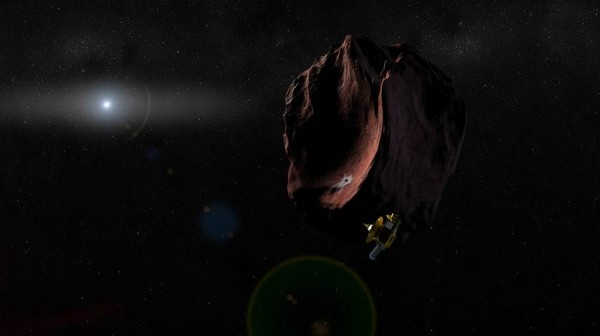By Ana Verayo, | October 19, 2016

Data from the Hubble Space Telescope suggests that 2014 MU69 has a reddish hue, even redder than Pluto.
After a successful and epic flyby of Pluto, NASA's New Horizons spacecraft is now heading to another target. This object appears to be mysteriously red in color based on Hubble Space Telescope's observations.
Like Us on Facebook
Mission scientists are now studying 11 objects in the Kuiper Belt, where millions of icy rocks and bodies float beyond the orbit of Neptune. With the help of new data from Hubble, one of these 11 objects called 2014 MU69 will be visited by New Horizons on January 1, 2019.
According to mission scientist Amanda Zangari of the Southwest Research Institute in Colorado, it appears that 2014 MU69 is redder than Pluto although not as red as Mars.
Astronomers are still determining the exact size of this reddish icy body. The object is estimated to measure 13 to 25 miles across, making it the smallest body to be ever investigated by NASA in the Kuiper Belt, says Zangari.
New Horizons will zoom at 1,860 miles near the body's surface. The reddish hue of 2014 MU69 indicates that it is part of Kuiper Belt's "cold classical" region which holds ancient icy objects from the beginning of the solar system and has remained unchanged for 4.6 billion years.
The New Horizons spacecraft was launched in January 2006 and traveled in deep space for almost ten years to reach Pluto. It arrived at the Pluto system on July 14, 2015 making this the first-ever mission to obtain high resolution imagery and science from 7,800 miles above the surface of the dwarf planet. This crucial encounter revealed a dynamic world with diverse landscapes of water ice mountains and volcanoes as well as vast plains of nitrogen ice.
Since the Pluto flyby, New Horizons has been beaming back a deluge of precious data. This massive amount of data and imagery transmission will be complete by October 23, according to NASA.
-
Use of Coronavirus Pandemic Drones Raises Privacy Concerns: Drones Spread Fear, Local Officials Say

-
Coronavirus Hampers The Delivery Of Lockheed Martin F-35 Stealth Fighters For 2020

-
Instagram Speeds Up Plans to Add Account Memorialization Feature Due to COVID-19 Deaths

-
NASA: Perseverance Plans to Bring 'Mars Rock' to Earth in 2031

-
600 Dead And 3,000 In The Hospital as Iranians Believed Drinking High-Concentrations of Alcohol Can Cure The Coronavirus

-
600 Dead And 3,000 In The Hospital as Iranians Believed Drinking High-Concentrations of Alcohol Can Cure The Coronavirus

-
COVID-19: Doctors, Nurses Use Virtual Reality to Learn New Skills in Treating Coronavirus Patients







